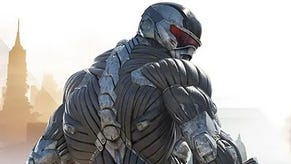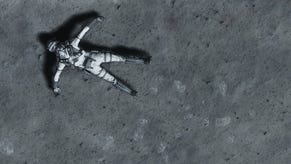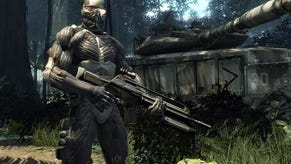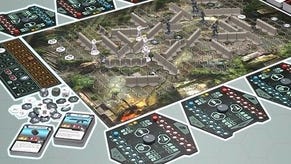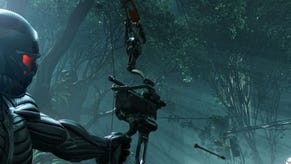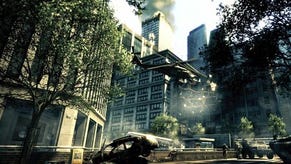Crysis 2
Nanosuits you, sir.
Gunfire, eh? It's not the first sign that Gotham's in a bit of a fix. Set three years after the events of the original Crysis, the sequel depicts a world that has been thoroughly chewed up by swarms of nasty aliens. Tokyo, London, and a handful of other cities have already been decimated, and good old Nomad's turned up just as the Big Apple takes a gigantic extra-terrestrial shoeing of its own.
The iconography is standard 9/11 stuff - rolling waves of toxic dust, the odd sneaker abandoned in the gutter, and haphazard photo walls of the missing that ensured that, during the presentation of the teaser trailer, nobody really knew where to look - but Crytek's doing it all in the name of emotional engagement.
"One of the things we learnt about the first Crysis was that nobody really cared about why you were being asked to defend this tropical island," admits the company's co-founder and all-purpose dreamboat, Cevat Yerli. "We wanted to elevate the emotional relevance this time. New York is symbolic of our pride in mankind. If I was to pick one city to protect, it would be New York."
Sucks to be you, eh, Nizhny Novgorod? Although the phrasing makes it sound like something that can be tweaked with a slider, emotional relevance comes up quite a lot when Yerli talks about his latest game. Perhaps that's because the original Crysis is too often seen as purely a technological achievement, its "video-realism" and tangled, tousled foliage making it easy for people to forget that its huge environments were tailor-made for intricate firefights and violent self-expression.

This time, the developer wants a strong narrative at the heart of it all. It seems like an odd idea, initially, given the first two games' brilliant capacity to allow players to tell their own stories (granted, they were generally stories about punching sheds). What seems to be on the agenda is a twisting, sneaky kind of yarn that threads through the freeform set-pieces, giving them an added urgency.
The science fiction novelist Richard Morgan has been brought in to handle everything from the broad strokes of the plotting to the detailed textures like NPC dialogue - during a brief chat it turns out that he's a huge Thomas Pynchon fan, which is a fascinating prospect. The developer is promising a storyline that fills in the backdrop of the rather sketchy Crysis universe, and will also make you care about the events taking place in the foreground. This time, when you punch a shed, you may well find yourself crying.
One of the keys to the story is the famous Nanosuit, now upgraded to Nanosuit 2.0 (which probably just means it's got Twitter support and its own iBook store). Nobody's saying just how Nomad's iconic clobber comes to play a pivotal role in the narrative - and it certainly means Crysis 2 will be one of the first pieces of fiction in which a pair of rubbery trousers have their own character arc - but it's a smart choice, as the suit already plays a pivotal role in the games' moment-to-moment action.

